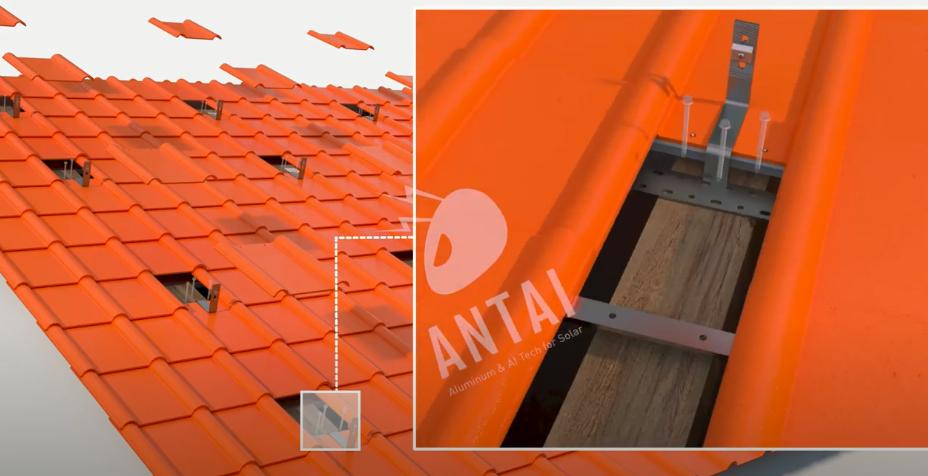Understanding Local Regulations for Tile Roof Solar Installations
August 06, 2025
When contemplating solar panel installations, understanding local regulations is crucial, especially for tile roofs. These regulations not only dictate the installation process but also ensure safety and compliance with community standards. This article explores the essential aspects of local regulations regarding solar panel mounting on tile roof and offers guidance for homeowners and installers alike.

Before initiating any solar panel mounting on tile roof projects, it is essential to familiarize yourself with local permitting requirements. Many municipalities have regulations concerning the installation of solar systems, which may include obtaining permits, undergoing inspections, and submitting specific documentation. Typically, these regulations are established to ensure that the installation adheres to safety standards and building codes.
Failing to comply with these requirements can lead to fines, delays in project completion, or even the removal of an installed system. Therefore, it is prudent to consult local building departments or zoning boards to understand the specific guidelines associated with solar panel mounting on tile roofs. This proactive approach can save time and resources.
Another critical aspect to consider when planning for solar panel mounting on tile roofs is compliance with local building codes. These codes may specify requirements for structural integrity, ensuring that the roof can adequately support the additional weight and installation of solar panels. It's essential to evaluate the condition of the existing tile roof and determine whether any repairs or reinforcements are necessary before proceeding.
Solar panel mounting on tile roofs may also require specific types of mounting systems that comply with local regulations. For instance, installers may need to use designated solar panel mounting hardware that is tested and certified to withstand local wind and weather conditions. Understanding these codes ensures a safe and compliant installation process, ultimately contributing to the longevity of the solar energy system.
In addition to municipal regulations, it’s vital to review any restrictions imposed by homeowners associations (HOAs). Some communities have aesthetic requirements governing the appearance of solar installations, including the orientation and visibility of solar panels on tile roofs. HOAs may have guidelines on the color, design, and placement of solar panels to ensure they align with neighborhood aesthetics.
Before beginning installation, homeowners should engage with their HOA to seek approval and ensure compliance with any rules or guidelines related to solar panel mounting on tile roofs. This collaboration can help prevent conflicts and enhance community acceptance of renewable energy initiatives.
Understanding local regulations is a fundamental step in successfully installing solar panels on tile roofs. By navigating permitting requirements, adhering to building codes, and complying with HOA guidelines, homeowners can ensure a smooth and compliant installation process. Proper attention to these factors will not only enhance the efficiency of solar panel mounting on tile roofs but also promote sustainable energy practices within the community.
At Antaisolar, we provide innovative solutions for solar installations, including versatile hooks designed specifically for various tile roof types. Our commitment to quality and compliance ensures that our customers receive reliable and effective products for their solar energy needs.

Navigating Permitting Requirements
Before initiating any solar panel mounting on tile roof projects, it is essential to familiarize yourself with local permitting requirements. Many municipalities have regulations concerning the installation of solar systems, which may include obtaining permits, undergoing inspections, and submitting specific documentation. Typically, these regulations are established to ensure that the installation adheres to safety standards and building codes.
Failing to comply with these requirements can lead to fines, delays in project completion, or even the removal of an installed system. Therefore, it is prudent to consult local building departments or zoning boards to understand the specific guidelines associated with solar panel mounting on tile roofs. This proactive approach can save time and resources.
Building Codes and Structural Considerations
Another critical aspect to consider when planning for solar panel mounting on tile roofs is compliance with local building codes. These codes may specify requirements for structural integrity, ensuring that the roof can adequately support the additional weight and installation of solar panels. It's essential to evaluate the condition of the existing tile roof and determine whether any repairs or reinforcements are necessary before proceeding.
Solar panel mounting on tile roofs may also require specific types of mounting systems that comply with local regulations. For instance, installers may need to use designated solar panel mounting hardware that is tested and certified to withstand local wind and weather conditions. Understanding these codes ensures a safe and compliant installation process, ultimately contributing to the longevity of the solar energy system.
Homeowners Association (HOA) Guidelines
In addition to municipal regulations, it’s vital to review any restrictions imposed by homeowners associations (HOAs). Some communities have aesthetic requirements governing the appearance of solar installations, including the orientation and visibility of solar panels on tile roofs. HOAs may have guidelines on the color, design, and placement of solar panels to ensure they align with neighborhood aesthetics.
Before beginning installation, homeowners should engage with their HOA to seek approval and ensure compliance with any rules or guidelines related to solar panel mounting on tile roofs. This collaboration can help prevent conflicts and enhance community acceptance of renewable energy initiatives.
Conclusion
Understanding local regulations is a fundamental step in successfully installing solar panels on tile roofs. By navigating permitting requirements, adhering to building codes, and complying with HOA guidelines, homeowners can ensure a smooth and compliant installation process. Proper attention to these factors will not only enhance the efficiency of solar panel mounting on tile roofs but also promote sustainable energy practices within the community.
At Antaisolar, we provide innovative solutions for solar installations, including versatile hooks designed specifically for various tile roof types. Our commitment to quality and compliance ensures that our customers receive reliable and effective products for their solar energy needs.
end
